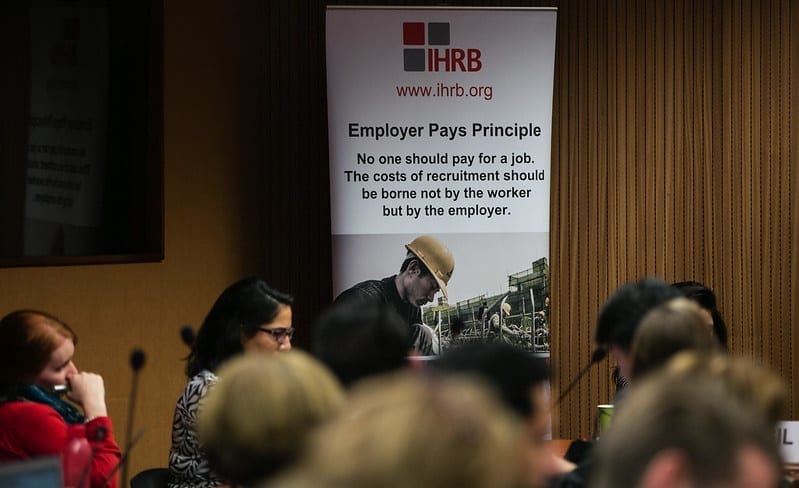
Six Steps to Responsible Recruitment
The Employer Pays Principle guides companies committed to responsible recruitment to pay the full costs of recruitment. This short guide breaks down the six steps every company should take to know and show they are meeting the commitment in practice.
1. Commit to and develop an EPP policy, then embed it across the company
Define the content:
• The policy commitment should reflect the Employer Pays Principle, that: No worker should pay for a job – the costs of recruitment should be borne not by the worker but by the employer.
• The commitment should state that migrant workers shall not be required to pay for their employment.
• The commitment should state that the costs and fees associated with recruitment, travel and processing of migrant workers from their home community to the workplace, including through to return when the relocation is not permanent, shall be covered by the employer.
• The commitment should state that the employer should pay the costs of recruitment directly to the extent possible. When not possible, or where the migrant worker is legally required to pay a fee or cost directly, the migrant worker shall be reimbursed by the employer as soon as practicable upon discovery.
• The commitment should clearly explain how it applies to the company’s workforce (employees and contract workers) as well as the company’s expectations of business partners.
Develop the policy:
• Evaluate existing policies on recruitment, the policies of peer companies and competitors, as well as international standards, including ILO Convention 181 (Convention on Private Employment Agencies).
• Draw on internal and external stakeholders and resources, and involve senior managers from the start.
• Develop a clear business case for adopting the EPP focused on: the human rights risk to recruited workers, legal compliance, brand reputation, and operational efficiency.
• Identify key gatekeepers / functional heads within internal company departments. Raise their awareness and secure buy in to get the policy adopted and implemented.
• Assign responsibility for the EPP policy, and secure sign off for the EPP policy at Board level.
Align the policy internally:
• Ensure other human rights and operational policies and processes are consistent and do not conflict with the EPP commitment.
• Ensure adequate support and resources for implementation of the EPP commitment, including through leadership, accountability, and appropriate incentives and disincentives.
• Develop, deliver or recommend training for managers and supervisors on appropriate recruitment and remedy processes, including responding to dilemmas and unforeseen circumstances.
Apply the commitment to business relationships:
• Reflect the policy within existing and future business partner guidance, contracts and on-going management.
• Be prepared to support existing suppliers / business relationships to implement the policy.
Communicate the policy:
• The EPP policy commitment should be publicly available.
• Communicate the policy internally to all workers (management, staff, business units, subsidiaries, and others).
• Communicate the policy externally to all business partners and others in the company value chain, including current and future / potential migrant workers.
To read the additional steps, click here.
